|
UA MINIRESIDENSSIT: GEORGIE GOATER & ARLENE TUCKER (siirryt Urbanapa nettisivuun) ENGLISH BELOW Demo, keskustelu, ulostulo – Georgie Goaterin ja Arlene Tuckerin residenssijakso kulminoituu julkiseen tapahtumaan SOLU-tilassa, jossa taiteilijat jakavat prosessiaan ja työtään. Vapaa pääsy! Residenssinsä aikana Georgie ja Arlene tutkivat intersemioottisten käännösten prosesseja erityisesti välineestä liikkeeseen. Miten esimerkiksi visuaalinen teos käännetään liikkuvaan kehoon? Miten voisimme ruumiillistaa tai fyysistää tekstin kääntämisen avulla? Miten ymmärrämme viestin ja miten voisimme koodata, purkaa ja koodata elementtejä kunnioittaen samalla lähdetekstiä? Kääntämällä tulemme tietoisemmiksi siitä, miten vastaanotamme tietoa ja miten haluamme viestiä. Kääntäminen on konkreettinen tapa olla aktivisti ja lisätä tietoisuutta valinnoistamme ja merkityksenantoprosesseistamme. Tuomalla kääntämisen kehoon ymmärrämme ja harjoittelemme sanojen ulkopuolisia viestintätapoja. Lähtökohtamme on, että olemme jatkuvassa käännöksessä. Käytämme apuna Jeremy Mundayn kirjaa ‘Introducing Translation Studies: Theories and Applications’, jotta voimme luoda pisteitä ja leikkimielisiä mutta kriittisiä lähestymistapoja käännöstekniikoihin ja -teorioihin käytännössä kehon kanssa. Koska tiedämme, että yhdessä olemme luonnostaan erilaisia ja suhteellisia, keskitymme tarkastelemaan osallisuutta, saavutettavuutta ja kuulumista, mikä tuo esiin subjektiviteetteja yhteistyössä. Miten voimme piirtää omilla yksilöllisillä kehoillamme, liikkuvuusvälineillämme ja liikeilmaisuillamme? Miten voimme saadaitsemme kuuluviin tanssin ja liikkeen avulla? Arlene on käyttänyt käännöstekniikoita taiteen luomiseen, mutta myös viestinnän ymmärtämiseen vuodesta 2009 lähtien Translation is Dialogue (TID) -työnsä kautta. Suurimmaksi osaksi käännökset ovat olleet visuaalisia ja tekstuaalisia. TID:n kautta Arlene on työskennellyt erilaisten yhteisöjen kanssa ja erilaisten iteraatioiden kautta, kuten Bogotassa, Kolumbiassa, sijaitsevien vanhainkotien asukkaiden kanssa ja vankiloista kärsivien ihmisten kanssa, kuten Free Translation -teoksessa. Georgie on työskennellyt tanssitaiteen parissa vuodesta 2012 lähtien keskittyen esteettömyyteen ja osallisuuteen. Arlene ja Georgie alkoivat miettiä kääntämistekniikoiden tutkimista muilla tavoin kehon kanssa liikkeen ja tanssin avulla, jotta kääntämismatriisiin voitaisiin sisällyttää monipuolista havaintotietoa. Milloin: 20.4.2024 klo 13:45 (tapahtuman kesto n. 90 min) Where: SOLU-tila (Panimokatu 1) Language: englanti & suomi Jos olet kiinnostunut tulemaan tutustumaan kanssamme SOLUssa, ota yhteyttä Arleneen tai Georgieen [email protected] tai [email protected]. Jakotapahtumaan on rajoitetusti paikkoja! Ilmoittauduthan sähköpostitse Georgielle. Ilo, 3,5-vuotias jackrussellinterrieri, tulee mukaan tapahtumaan. Georgie Goater on Aotearoasta kotoisin oleva tanssitaiteilija, joka asuu Helsingissä. Hän on syntynyt ja kasvanut kaksikielisenä Nagoyassa (JP) ja Ōtautahissa (NZ). Hän esiintyy ja koreografioi, fasilitoi työpajoja, kirjoittaa ja tekee yhteistyötä itsenäisesti, Kaaos Companyn (FI) ja Memory as Medium- sekä Body Island -kollektiivien (NZ/FI) kanssa. Työskentely erilaisten ruumiillisten käsitysten kanssa sekä vammaisuuden ja monikulttuurisuuden konteksteissa liikkuminen on luonut perustan jatkuvalle oppimiselle. Arlene Tucker hyödyntää työssään käännösopintoja, visuaalista taidetta, semiotiikka ja feministisiä praktiikoita. ”Taiteeni hahmottuu installaation ja dialogikäytäntöjen varaan. Toteutan työni yhteistyössä yleisön kanssa, minkä myötä voimme jakaa yhdessä perpektiivimme identiteettiin ja kuulumiseen liittyen esimerkiksi muistojen, hiusten ja kirjeiden kirjoittamisen keinoin.” Kun hän kerää ja muotoilee uudelleen identiteettejä ja haastaa samalla normeja, hän kohtaa sukupolvien väliset piilotetut traumansa ja pyrkii myönteiseen muutokseen. Saavutettavuus Pääsisäänkäynnille johtaa 9 porrasta, minkä lisäksi ovelle pääsee rakennuksen vieressä olevan rampin kautta. Etuovi on painava ja siinä on 2cm kynnys. Aulasta pääsee SOLU-tilaan (3. krs) hissillä. Tilassa on suuri wc, johon mahtuu pyörätuolilla. Vessan ovella on 2 cm kynnys. Pyörätuoli mahtuu vain wc-pöntön vasemmalle puolelle (wc-pönttöä päin katsottuna). Vain pöntön vasemmalla puolella (pönttöön päin katsottuna) on kaide, jonka voi nostaa ylös. Tilassa ei ole induktiosilmukkaa. UA Miniresidenssit on UrbanApan uusi konsepti, jonka tarkoituksena on mahdollistaa jatukea taiteilijoiden ja taiteen tekijöiden työskentelyä pehmeällä, kevyellä ja yhteisöllisellätavalla. Ensimmäisessä vaiheessa miniresidenssejä pilotoidaan, mutta pidempiaikainen haave on tarjota tiloja laajemminkin taiteen käyttöön, rikastuttaa ruohonjuuritason työskentelyä ja laajentaa taidealan tukirakenteita. A sharing, a demo, a discussion, an outcome – Georgie Goater’s and Arlene Tucker’s residency period for UA Miniresidencies culminates in a public event in SOLU Space where the artists share some of their process and work. Free admission!
During their residency, Georgie and Arlene will be exploring processes of intersemiotic translations specifically from a medium into movement. For example, how would one translate a visual piece to the moving body? How would we embody or physicalise a text using translation? What is our understanding of the message and how could we code, decode, and encode the elements while honouring the source text? By translating, we become more aware of how we receive information and how we want to communicate. Translation is a concrete way to be an activist and grow more awareness of our choices and meaning-making processes. By bringing translation into the body, we understand and practice modes of communication beyond words. We come from the perspective that we are in a constant state of translating. We will resource Jeremy Munday’s book, ‘Introducing Translation Studies: Theories and Applications’ for creating scores and playful yet critical approaches to translation techniques and theories inpractice with the body. Knowing that together we are inherently diverse and relational, we will have a focused lens on inclusion, accessibility, and belonging, bringing into focus subjectivities within collaboration. How can we draw with our unique embodiments, mobility tools and movement expressions? How can we make ourselves heard through dance and movement? Arlene has been using translation techniques as a mode to create art, but also to betterunderstand what is being communicated since 2009 through Translation is Dialogue (TID). For the most part, the translations have been visual and textual. Through TID, Arlene has been working with various communities and through different iterations such as residents of elderly homes in Bogota, Colombia and through people affected by incarceration as in FreeTranslation. Georgie has been working with dance art with focus on access and inclusion since 2012. Arlene and Georgie started to think about exploring translation techniques in other ways with the body through movement and dance, to include diverse perceptual knowledge into the translative matrix. When: 20 April 2024 at 13:45 (duration approx. 90 minutes) Where: SOLU Space (Panimokatu 1) Language: English & Finnish If you are interested in coming to explore with us at SOLU, please reach out to Arlene or Georgie [email protected] or [email protected]. Places are limited! Email Georgie to register. Please note that Ilo, a 3.5 year old Jack Russell terrier, will be joining the event. Georgie Goater is a dance artist from Aotearoa, based in Helsinki. She was born and grewup bi-lingual in Nagoya (JP) and Ōtautahi (NZ). She performs, choreographs, facilitates workshops, writes, and collaborates as a freelancer, with Kaaos Company (FI) and with collectives Memory as Medium and Body Island (NZ/FI). Working with diverse embodied perceptions across disability and multi-cultural contexts has been a ground for making and constant learning. Arlene Tucker’s socially engaged work utilizes translation studies, visual art, semiotics, and feminist practices. “I realise my art through installation and dialogical practices. Always a co-creation with the public, my work allows us to share perspectives about identity and belonging through different mediums and approaches such as memories, hair, and letter writing.” As she accumulates and reformulates identities whilst challenging norms, she confronts her hidden intergenerational traumas for positive change. Accessibility 9 stairs lead to the building’s front lobby. There is also a ramp next to the building through which you can access the front door. The front door is heavy and has two 2 cm thresholds. From the front lobby, you can take an elevator directly to the SOLU Space (3rd floor). There is a large toilet that can accommodate a wheelchair. The toilet has a 2 cm threshold on the door. A wheelchair can only fit on the left-side (when facing the toilet) of the toilet. There is a handrail only on the left of the toilet (when facing the toilet) which can be lifted up. The space does not have an induction loop. UA Miniresidencies is a series of short residencies that aims to enable and support artists’ and makers’ research or work in progress in a soft, light, and communal way. The long term dream is to alleviate the urgent need for working spaces, enrich the local grassroots scene and create expanded structures of support.
0 Comments
Welcome to join a professional development workshop on how to incorporate artistic practice into a rehabilitation program. We will present the Free Translation project, share our techniques, and discuss ways to participate in the program. We will create a room for us all to share and to hear more about your work. The main language of the meeting will be held in English. Language support in Finnish and in Russian can be given. If you would like to join this meeting and need special technical or communication support, please let us know in your registration form. We strive for an equitable society where art is accessible and dialogue is encouraged.
Meeting via Zoom on: May 12th from 17:00-18:30 EEST May 13th from 10:00-11:30 EEST Free Translation (2017, Helsinki, Finland) is an ongoing international art project and a series of open workshops for system-impacted people to share their thoughts and experience through art practice. In this project we use translation techniques as a means of creatively interpreting works of art. This means that we interpret the meaning of the works and create new works of art based on the translations. This can be a translation into another language or another medium. For example, a poem can be realized into a photograph and a drawing can be written as a letter. In this way, we make new works of art and literature, and attempt to understand each other and ourselves as we have an open dialogue. After a new work is complete, it is sent to the original author via an art exchange program. To date we have received over 100 works of art from people affected by incarceration who have participated in our program. Visit the online gallery at https://freetranslation.prisonspace.org. As a result of many years of collaborating with system-affected people, we recognize the need to prepare a person for the reintegration into society. Free Translation project experts see the idea of reintegration to mean finding a place in society, but also how to communicate, confront, and approach and identify one's feelings, thoughts, and needs. The project offers a diverse, inclusive and transcultural approach to arts in and around institutionalization. Working together with organizations in Finland and abroad we can reach more people who are in need of tools for self-expression. This is a unique project for Finland, as it allows the sharing of art, experience, and knowledge internationally. This project ensures diversity, promotes empathy, and helps to build a more tolerant society. As inclusivity and creating space for all voices to be heard is the project’s aim, we have implemented a way for incarcerated artists to create with others. Our community is a skill-sharing based group for artists, educators, lawyers, policymakers, social workers in Russia, Finland, Belgium, the United States, and beyond. In this cross-disciplinary project we invite workers from different departments, such as social workers, psychologists, guards, and educators. Space is limited and registration is required. The first admitted 15 persons will be able to join. Subsequent registrations will be put on the waiting list. Zoom link will be sent to you the day before the event. Please register here or use the form below. About the authors: Anastasia Artemeva and Arlene Tucker are artists, researchers, educators and diversity agents, who come from the perspective and field of creative expression and process based arts through open dialogue. We are experts in promoting diversity within the creative arts and strive to ensure everyone is included and heard. We have been working extensively with different groups of people of all ages, including youth in children’s homes, currently and formerly incarcerated people, folks in retirement homes, in Finland and abroad. We are honored to be supported by the Arts Promotion Center Finland and Kone Foundation. We can be reached at [email protected]. We look forward to hearing from you. Our best, Anastasia & Arlene Welcome to Free Translation Sessions with JAC (The Justice Arts Coalition) on the following Thursdays, June 11th, 18th, 25th, and July 2nd on ZOOM from 12:00 - 1:30 pm EST (9am California, 6pm Brussels, 7pm Helsinki)
On June 11th we will make a translation of a work by Оксана Крутицкая (Oksana Krytickaya). On June 18th we will have an open discussion about your translations with Оксана Крутицкая (Oksana Krytickaya). On June 25th we will make a translation of a work from an artist who has exhibited with Free Translation. TBA. On July 2nd we will have an open discussion about your translations with the artist of translated works on June 25th. Free Translation is a multi-disciplinary project showcasing international works by currently and formerly incarcerated people, and anyone affected by imprisonment. In these sessions we use translation techniques as a means of creatively interpreting works of art and word. This means that we interpret the meaning of the works and create new works of art based on the translations. This can be a translation into another language or another medium. For example, a poem can be manifested into a photograph and a drawing can be written as a letter. In this way, we make new works of art and literature, and attempt to understand each other and open up dialogue. During the 90 minute open art making session we will create translations of the works by Оксана Крутицкая (Oksana Krytickaya) and another Free Translation artist to be announced later. In the following sessions we will then speak with the artist and review the translations of their work. With your consent, artworks will be added to the Free Translation exhibition for the general public to see and continue the dialogue. PURCHASE TICKETS FOR THIS WORKSHOP SEQUENCE, AS WELL AS JAC'S OTHER CREATE + CONNECT EVENTS, AT THIS LINK: https://bit.ly/3cAW8iV https://freetranslation.prisonspace.org About the facilitators: Anastasia Artemeva is a visual and socially-engaged artist and researcher. Anastasia was born in Moscow, Russia, and lived in Ireland for many years before moving to Helsinki. Her socially-engaged creative projects explore and create space for communication and interaction. Conceptually, its activities are based on codes of social norms and accepted truths, which are influenced by socio-political, cultural and personal limitations and boundaries. Anastasia works in the genre of drawing, art installation, performance, creates artwork for theatrical productions and conducts art workshops. Arlene Tucker is an artist and educator, and her work focuses on adding play elements to daily life through her art. Inspired by translation studies and animals she finds ways to connect and make meaning in our shared environments. Her process-based artistic work creates spaces and situations for exchange, dialogue, and transformations to occur and surprise all players. She is interested in creating projects that open up ideas and that engage the viewer; that invite the viewer to be a part of the narrative or art creation process. In translation, your participation continues to propel the story. Free Translation Sessions is a collaboration of two projects both based in Helsinki: Prison Outside and Translation is Dialogue (TID). Prison Outside is an independent project founded in 2015. The research behind this project is centered on the subjects of imprisonment, justice, and the role of the arts in the relationships between people in prisons and people outside. TID is an art installation that generates a new project every time it is presented. TID uses translation techniques to not only produce art, but also understand what is being communicated. https://prisonspace.org https://www.translationisdialogue.org A conversation between Carole Alden and Arlene Tucker was published in Le Journal de Culture & Démocratie in April 2020. Hélène Hiessler translated the article into French from English. Read the publication in French here. Below is the English version. To learn more about Culture & Démocratie, please click here. Free Translation is a multi-disciplinary exhibition showcasing international works generated from an open call to incarcerated people, ex-convicts, and anyone affected by imprisonment. Through this platform, artist and Free Translation co-developer Arlene Tucker met artist, Carole Alden. Through art practice, mail exchange and dialogue ideas, preconceptions, expectations, false realities, and forms of expressions are explored. From the exhibition, Free Translation Sessions were born. In these gatherings we make art, interpretations, and view and discuss artworks received. The sharing of personal stories, experimenting with art techniques, and listening to subjective views can help guide one’s artistic process and shed light on different walks of life. __ Arlene Tucker (AT): The work you contributed to the Free Translation exhibition has been an inspiration for more artworks and the dialogue that has been raised through your pieces has been very powerful. Did you ever think that your work would be a source of translation? Carole Alden (CA): When you create in isolation, you have no concept of your work impacting others. For me it began as a vehicle to turn overwhelming mental and emotional anguish into something survivable. My hope being an evolution from feeling helpless, to a productive plan for my life. In or out of prison, I wanted my life experiences to count for something. I had no idea that a project like Free Translation existed. Where I live, incarcerated persons are essentially shunned. You feel completely disenfranchised from society. There is no real dialogue between incarcerated and free people. Prior to my involvement with Free Translation, l had never seen any effort from free people to understand the experience of being in prison or what might happen in a person’s life to precipitate time spent in prison. You were ostracized and ignored. Made to feel as though you were bankrupt of all that made you human. AT: It was through Wendy Jason at Prison Arts Coalition (now The Justice Arts Coalition) that led us to you and your work. In the end, you made the effort to stay in touch, to share with me. Dialogue is not solitary. CA: Believe me, I am grateful to be found! My mother had found The Justice Arts Coalition and urged me to contact them. I was extremely hesitant after being defrauded by multiple entities claiming to assist incarcerated artists. It was a year of corresponding with Wendy before I decided to take the plunge and trust someone with my artwork again. I was thrilled to find an organization that was true to their word and not in the business of exploiting prison artists. Because of the groundwork of trust she laid, I felt very comfortable in sharing my images with Free Translation when she suggested it. AT: What was this drawing of the Woman Impaled about for you? CA: The first version I had drawn while still in the original jail, awaiting adjudication of my charges. That was towards the end of 2006. I had no access to competent legal representation and no one to advocate on my behalf. I literally felt the system was a continuation of the abuse and death my spouse had planned for me. I felt emotionally and physically stripped of anything that allows a person to feel human. My hopes and dreams were disappearing beyond the horizon. I felt my life draining away and nothing but immobilization and overwhelming anguish and pain. I wanted to die. I felt that if my spirit were no longer tied to a physical body, then it could leave this place to go be with my children. AT: How long were you incarcerated for? CA: I did 13 years out of a 1-15 indeterminate sentence. AT: How did people interact with each other? Was there anybody that you felt you could confide in? CA: The women's prison in Utah had a very different social dynamic than the men’s when it came to certain things. Long term inmates tended to recreate designations that approximated family relationships. Roles were adopted as mothers, fathers, and children. It was not unusual to hear young women speak of having a biological mother, a street mother, and a prison mom. A larger context had to do with commerce, which encompassed drugs, commissary items, and services. In all the time I was down, I kept myself separate from most of what constituted prison culture. I watched, paid attention, and discerned that being enmeshed in the social standards and practices were the primary source of conflict both with each other and the officers. I was determined to remain focused on what I could create in order to be better equipped for the future on the outside. There was really only one other inmate I got close enough to share my hopes and dreams with. She is also an artist and still inside. We were only housed in the same general vicinity for a couple years yet we remain close and invested in each other’s success. AT: What about solidarity or some sort of togetherness within the prisons? Did you feel like you could come together with others or was it very solitary? How were people separated? CA: We saw considerable solidarity on the men’s side. They would organize strikes and protest to get policies changed. This did not happen on the women’s. Too many feared retaliation, or would inadvertently undermine their peers by trying to use relationships with certain guards to change just their own circumstances. Some of it had to do with the feeling that we had more to lose than the men. Tenuous contact with our families was a big deterrent to standing up for yourself. AT: What do you think about the translations, the artworks responding to your original artwork, Woman Impaled? Can you perceive how your painting was translated or interpreted based on their piece of art? CA: Honestly, I was shocked at how perceptive the participants were. They expressed a depth of understanding and empathy I was totally unprepared for. It had the effect of removing my sense of isolation. For the first time in 13 years I felt a restored hope that there was still a place in the world for me. Prior to this, my anxiety surrounding the eventuality of release was debilitating. AT: When you don’t know, you’re in limbo and that can be a hard place to be. Would you like to share on what grounds you were convicted? CA: That limbo of not knowing for sure is probably the most psychologically damaging part of indeterminate sentencing. It robs a person of the ability to create a realistic plan for their future. Everything feels imaginary and moot until you finally have your release date, no matter how close or far off it might be. I had an indeterminate sentence of I to 15 years for second degree manslaughter. My matrix was 5 years. In other words, the suggested time to be served in consideration of mitigating circumstances. I waited 4 years to hear when my date to see the board would be. At a little over 5 years I saw the board. The board chose to ignore the reports of domestic violence and evidence of self defense. I had shot the man as I was cornered in a small laundry room. At that moment. I had no other option that preserved my own life or my children’s. AT: How did you manage to keep making art while incarcerated? CA: Deprivation is the mother of creativity. I continuously scanned my environment for materials to repurpose in order to expand the possibilities of what I could create. Not getting caught was often a large part of the creative equation. Balancing that drive to create with the institutional directive to remain idle was an ongoing conflict. I did my best to fly under the radar and not attract attention. It was an ongoing occurrence for the SWAT team to come through and throw away any artwork, even if you had written permission to construct it. I began with drawing as it seemed to be tolerated more than other forms of expression. During the winter I would utilize the snow as a sculpting medium. At my four year mark, the urge to sculpt overwhelmed my aversion to crochet. I taught myself one basic stitch and began to experiment with yarn as a sculpting medium. As I became more proficient, my efforts evolved from largely meditative to a challenge to keep my thought process sharp. At 8 years down I was transferred to a county facility. With only 70 inmates at a time, the officers took a greater interest in what people did to be productive. They turned out to be far more supportive than any facility I had been in. The last five years have brought multiple opportunities to communicate and exhibit my work. At the beginning of my incarceration I was told by the caseworker that I would never be transferred to a county facility due to my charges and my medical condition. When I was transferred, the receiving caseworker remarked that it was strange as I did not fit the criteria to be housed in a county jail. Aside from medical issues, I still had seven years remaining. County jails are not designed to keep someone for more than a year. Beyond a year, a person’s mental and physical health experiences marked decline. Whatever Utah prisons are lacking, their jails have a fraction of that. You have no access to a yard, usually no contact visits, no education beyond high school, no exercise equipment, or much in the way of jobs, religious options or a library. You basically eat and sleep. Not a place for long term inmates. AT: How was it that you were able to be transferred? Do you feel that because it was a smaller facility, the environment was less volatile? Or does it have anything to do with how those officers were being trained and supervised? CA: Originally I was transferred as a means to disrupt my access to an attorney who had expressed interest in reopening my case. Essentially they moved me in a manner that took away my ability to be in touch with my attorney and separated me from my legal files. Someone did not want my case to be scrutinized and took action to make it impossible for me to continue my appeal at that time. I was separated from all my legal paperwork, contact information, pictures of my children and all my artwork, supplies and personal belongings. Normally they tell you you’re being, “counted out” and you would be permitted time to pack whatever you’re allowed to take, and make arrangements for your family to collect the rest. They sent me to the opposite end of the state and allowed my things to be pilfered by inmates and officers alike. I lost a portfolio of work worth about $75,000.00 that I had hoped to start over with upon release. After reiterating my desire to self harm, they transferred me again to the county jail where I remained for the last 5 1/2 years. I do believe the quality of life in that facility was due largely to the staff and how they chose to treat people. They seemed to be allowed more agency in their personal interpretation of their role as guards. Consequently we had individuals who treated us like human beings and encouraged positive endeavors. This is very rare in Utah Corrections. I am very grateful for the opportunity and encouragement I received in creating my work. AT: How are you feeling since your release? What kind of challenges have you been faced with? In the time you have been free, what have you already adjusted to? CA: Being released, unexpectedly, several years early was a mixed blessing. My over the top elation was tempered by my abject terror over all the things I had no time to prepare for. Would I flinch if a grandchild rushed in for a hug? Would I freeze and bolt if I felt overwhelmed at a Walmart? How on earth would I support myself at the age of 59 with absolutely nothing? The thought of trying to understand fractions of words in texting had me in tears. Thankfully, becoming connected with people in this community has gone a long way in helping me forgive myself for the learning curve I’m tackling. I have had a lot of support in rediscovering that I can still learn whatever I need to and become whoever I choose to be. AT: We cannot do this alone. Amazing that you could emotionally prepare yourself for your release and apply all of that insight into your current situation. When I read your letter about your release that you sent in May, you had talked about this and I was so impressed with your level of emotional awareness. Who were your go to people, your support system? How can we most efficiently and effectively process our emotions? We all are different, but I think sharing tips is one way to show support. At least it is for me! CA: Any release is daunting, but after over a decade, there’s really no way to adequately prepare yourself. Too many intangibles that bombard you at any given time with no warning. I had a couple close friends who had done time over twenty years ago. They were the ones to peel me off the ceiling and encourage me to believe I could do this. I think patience and encouragement are the biggest things. People want to help and tend to be quick to offer up solutions. At that fresh out stage, even having a bunch of problem solving solutions dropped in your lap can leave you feeling overwhelmed and paralyzed with indecision. Be loving and open. Give us the space we need to figure out what we need help with. AT: Now that you are free, what does confinement or imprisonment mean to you? How does that definition differ from prior to your incarceration? CA: Honestly, for most of my life prior to incarceration, I gave it absolutely no thought at all. It had not touched my life through family or friends. It was as disconnected to my reality as if someone said there was a planet of unicorns I could visit one day. About 7 years prior to my incarceration I had a friend go to prison for 11 months on a possession charge. That acquainted me with the gut gnawing fear that family members suffer nonstop during their loved one’s imprisonment. Knowing that they are rarely safe, and without adequate medical care, food or housing. Feeling their spirit and engagement in life wither as days, months, and years pass. In some ways, your family suffers even more. Yet support for your families is scant as well. Social judgment and humiliation is the norm. Being denied the basic dignity of liberty, even if you happen to be somewhere decent, will never be acceptable in my heart. I will never look at a zoo the same way or keeping pets. It hurts to see any living thing denied the choice to live the way they were meant to. ++ Free Translation’s open call for artworks is ongoing and open to all. This exhibition makes use of the translation process as we interact and create new artworks in the gallery space and online. Your works on view will encourage the audience to prompt dialogue, inspire thoughts, and creatively activate the space. Your voice is heard and recognized. Your artistic contribution is very much appreciated. Works can be emailed to [email protected] or mailed to: Free Translation ℅ Pixelache Kaasutehtaankatu 1 00580 Helsinki Finland On the online gallery, under each picture, there is the possibility for you to interpret or comment on that piece. It can be in text, visual, or video format. Your translations and interpretations inspires more thoughts, feelings, and perspectives to be shared and to be sparked. https://freetranslation.prisonspace.org Above are artworks made from a Free Translation workshop with high schoolers from The English School in Helsinki, Finland. These students chose to translate Alden's piece. Prison Outside is centred on the subjects of imprisonment, justice, and the role of the arts in the relationships between people in prisons and people outside. We are interested in perceptions of incarcerated people and ex-convicts in the society, and how we can break the stereotypes and support each other. We focus on artistic practices, be it prisoners’ own initiatives or designed educational projects that promote self-expression, solidarity and communication between people of all walks of life. We also offer a platform for production of artistic projects related to imprisonment, currently with a focus on Finland and Russia.
To keep up to date on Free Translation opportunities, please check www.prisonspace.org. About the authors: Carole Alden was born 1960 in Orleans, France to American parents. Grew up primarily in northern ldaho and Colorado. Dad was a forestry professor and mother a librarian. Nature and self education were the things I was exposed to the most as a child. They continue to guide the majority of my work. I married young and had five children from two marriages that spanned twenty years. I have no formal education nor art training beyond high school. Drawing was something I took up in prison. Prior to that I was a fiber artist with pieces in multiple museum collections. I taught myself to crochet while incarcerated and continue to create a variety of sculptures and wall hangings for venues ranging from political to natural. Arlene Tucker is an artist and educator. Inspired by translation studies, animals and nature, she finds ways to connect and make meaning in our shared environments. Her process-based artistic work creates spaces and situations for exchange, dialogue, and transformations to occur and surprise all players. She is interested in creating projects that open up ideas and that engage the viewer; that invite the viewer to be a part of the narrative or art creation process. In translation, your participation continues to propel the story. Her chapter, Translation is Dialogue: Language in Transit was published in Translating across Sensory and Linguistic Borders: Intersemiotic Journeys between Media (Editors: Campbell, Madeleine, Vidal, Ricarda, 2019). Tucker developed Free Translation with Anastasia Artemeva. Tucker has been collaborating with Prison Outside since 2017 and is author of Translation is Dialogue (2010). www.translationisdialogue.org Very excited to announce that our article, Process as the medium for socially engaged art, has been published in IMAG#7! Big thanks to InSEA and the editorial team- Ângela Saldanha, Bernadette Thomas and Teresa Torres de Eça.
"IMAG number 7 presents a collage of different essays created by InSEA members. When we initiated this issue we wanted to make visible the diverse range of art education practices in formal and non-formal settings and to invite the readers to engage in a visual journey; a process of ‘encountering others’. There is no filter on what should or should not constitute art education. Rather, here we have a mosaic of approaches; of ways of making and ways of understanding the role of art education in the schools, museums; universities and communities. We travel according to the last InSEA roads through the encounters generated during InSEA seminars and congresses. The journal opens with a story told by Steve Willis, current Vice President of InSEA, where he shares impressions, feelings and thoughts about his experience during the InSEA seminar in Walvis Bay, Namibia (Encounters with Otherness to achieve Knowingness). As our journey continues, the reader meets Korinna KorsströmMaggatröm-Magga (North Calling); Anastasia Artemeva and Arlene Tucker (Process as the medium for socially engaged art); Phivi Antoniou (Cyprus) and Dina Adel Hassan (Egypt). The northern authors reveal community art practices and social engaged intercultural projects in Finland and Russia. In the same section a different encounter invites the reader to learn about other socially engaged art education experiments in Alexandria, Egypt, with Dina Adel Hassan who describes using images, an experience conducted with Children at Risk in Egypt." Download The full ISSUE ( PDF 17,9 MB) or individual chapters. Otherness as a Form of Knowingness Steve Willis DOI: 10.24981/2414-3332-7.2019-2 Process as the medium for socially engaged art Anastasia Artemeva and Arlene Tucker DOI: 10.24981/2414-3332-7.2019-3 North Calling Korinna Korsström-Maggatröm-Magga DOI: 10.24981/2414-3332-7.2019-4 Field Experiments in Visual Arts: Children at Risk, Homeless Children Dina Adel Hassan DOI:10.24981/2414-3332-7.2019-5 People, Stories and Histories of Strovolos III – Public art, social engagement and situational practices Phivi Antoniou DOI: 10.24981/2414-3332-7.2019-6 The past in the present Ismini Sakellariadi DOI: 10.24981/2414-3332-7.2019-7 Educating through design | Eduquer par le design: Naissance d’un club de design Azza Maaoui DOI: 10.24981/2414-3332-7.2019-8 Maktab Gammarth Toursom Myriam Errais Borges DOI:10.24981/2414-3332-7.2019-9 Elisavet Konstantinidou & Eva Pavlidou DOI: 10.24981/2414-3332-7.2019-10 Exploring artistic and cultural identity through an art curriculum unit Fotini Larkou DOI: 10.24981/2414-3332-7.2019-11 Pensar, espacio, piel. Un ensayo visual desde nuestra experiencia como a/r/tógrafas. | To think, space, skin.A visual essay from our experience as a/r/tographers. María Martínez Morales; María Isabel Moreno Montoro and Nuria López Pérez DOI: 10.24981/2414-3332-7.2019-12 “Art Lab x Kids: art as an instrument for discovery and knowledge”: a visual literacy Project Katia Pangrazi DOI: 10.24981/2414-3332-7.2019-13 We are very excited to be part of No Labels No Walls Festival 2019 on Tuesday, September 24th from 15:30-18:30 at Caisa Culture Center on Kaikukatu 4 B, Helsinki!
Welcome to our September art-making sessions. We will view and discuss artworks received from all over the world in response to the Free Translation open call. These artworks are created by people affected by incarceration. During the three-hour session we will view the works and hear the stories of people who created them, many of whom are currently in prison. We will then create translations - responses to the artworks and upload them on the online exhibition, for the artists and for the general public to see and continue the dialogue. The translations can be visual, written, audible, photographic, or in any other form. You are welcome to bring materials of your choice - or simply bring yourself. This workshop welcomes people of all ages. For more information please contact Anastasia Artemeva and Arlene Tucker at info(at)prisonspace.org You are welcome to contribute to the ongoing interpretations at any time via https://freetranslation.prisonspace.org/ --- Tervetuloa meidän taiteen tekemisen sarjaan. Katsomme ja keskustelemme taiteellisista töistä, jotka ovat saapuneet eri puolilta maailmaa vastauksena vapaiden käännösten (Free Translation) avoimeen kutsuun. Teoksia ovat luoneet ihmiset, joihin on vaikuttanut vankeus. Kaksituntisen tapaamisen aikana tutustumme teoksiin ja kuulemme tarinoita niitä luoneilta ihmisiltä, joista monet ovat tälläkin hetkellä vankilassa. Tämän jälkeen teemme käännöksiä, vastauksia taideteoksille, ja lataamme ne verkkonäyttelyyn, jossa myös taiteilijat ja suurempi yleisö voivat osallistua dialogiin. Käännökset voivat olla visuaalisia, kirjallisia, kuunnelmia, valokuvia tai muita ilmaisumuotoja. Olet tervetullut tuomaan valitsemiasi materiaaleja – tai vain tuomaan itsesi. Työpaja soveltuu kaikenikäisille. 24.9.2014, klo 15.30-18.30 Kulttuurikeskus Caisa Kaikukatu 4 B, 00530 Helsinki Lisätietoa tapahtumasta meihin voit ottaa yhteyttä Anastasia Artemeva ja Arlene Tucker sähköpostilla osoitteeseen info(at)prisonspace.org. https://freetranslation.prisonspace.org/ --- Добро пожаловать на встречу на тему выставки Свободный перевод! Мы будем изучать произведения искусства, полученные из разных стран мира, и созданные людьми, на судьбу которых повлияло ограничение свободы. Эти работы были впервые показаны на выставке в пространстве MAA-tila в Хельсинки в ноябре 2018 года. В течение трехчасовой встречи мы рассмотрим рисунки, услышим стихи, и узнаем личные истории авторов работ, многие из которых в настоящее время находятся в тюрьме. Мы создадим свои собственные творческие работы, интерпретируя, “переводя” услышанное и увиденное, и поместим их на сайт выставки, где их увидят авторы и публика. Мы будем писать письма, рисовать, фотографировать, и использовать другие формы художественного самовыражения. Приносите любимые материалы, или просто приходите. К участию приглашаются взрослые и дети. По всем вопросам обращайтесь к Насте или Арлин по адресу info(at)prisonspace.org. https://freetranslation.prisonspace.org/ Our first Interpreting Free Translations meeting was very personal and intimate. Beautiful March sunlight made Bokvillan's library even more welcoming.
We started by moving around the room and translating own and each others feelings into performance. Then we looked at the artworks on Free Translation online gallery, and each selected pieces for translation. We used collage, writing, embroidery, language, used copy books, photography. We shared stories about identity, speaking own languages, accents. We tried to imagine what it was like for our artists to work on the pieces they have sent. At the end we shared our translations, and talked about the choices we'd made when working on them. Our interpretations are now being uploaded in the gallery under the source images. Welcome to join us next time in Bokvillan on Tuesday, 2.4 from 15:30-18:30. https://www.facebook.com/events/331066980873951/?ti=ia Arlene & Anastasia *Текст на русском языке ниже*
>English version below< Tulkitaan vapaita käännöksiä Tervetuloa meidän taiteen tekemisen sarja. Katsomme ja keskustelemme taiteellisista töistä, jotka ovat saapuneet eri puolilta maailmaa vastauksena vapaiden käännösten (Free Translation) avoimeen kutsuun. Teoksia ovat luoneet ihmiset, joihin on vaikuttanut vankeus, ja ne ovat olleet esillä MAA-tilassa marraskuussa 2018. Kaksituntisen tapaamisen aikana tutustumme teoksiin ja kuulemme tarinoita niitä luoneilta ihmisiltä, joista monet ovat tälläkin hetkellä vankilassa. Tämän jälkeen teemme käännöksiä, vastauksia taideteoksille, ja lataamme ne verkkonäyttelyyn, jossa myös taiteilijat ja suurempi yleisö voivat osallistua dialogiin. Käännökset voivat olla visuaalisia, kirjallisia, kuunnelmia, valokuvia tai muita ilmaisumuotoja. Olet tervetullut tuomaan valitsemiasi materiaaleja – tai vain tuomaan itsesi. Paikka: Bokvillan Kirjasto, Hämeentie 125, 00560, Helsinki Milloin: 5. marraskuuta, 2. huhtikuuta, 7. toukokuuta Aika: klo. 15.30-18.30 Kielet: Suomi, englanti, venäjä Kenelle: kaikkien ikäisille Lisätietoa tapahtumasta meihin voit ottaa yhteyttä Anastasia Artemeva ja Arlene Tucker sähköpostilla osoitteeseen info(at)prisonspace.org. --- Interpreting Free Translations Welcome to our art-making sessions. We will view and discuss artworks received from all over the world in response to the Free Translation open call. These artworks are created by people affected by incarceration, and exhibited in MAA-tila in November 2018. During the two hour session we will view the works and hear the stories of people who created them, many of whom are currently in prison. We will then create translations - responses to the artworks and upload them on the online exhibition, for the artists and for the general public to see and continue the dialogue. The translations can be visual, written, audible, photographic, or in any other form. You are welcome to bring materials of your choice - or simply bring yourself. Place: Bokvillan Library, Hämeentie 125, 00560, Helsinki Date: March 5th, April 2nd, May 7th Time: 15:30-18.30 Languages: English, Russian, Finnish All ages are welcome For more information please contact Anastasia Artemeva and Arlene Tucker at info(at)prisonspace.org --- Интерепретируя Свободный перевод Добро пожаловать на встречу по теме выставки Свободный перевод. Мы будем изучать произведения искусства, полученные из разных стран мира, и созданные людьми, на судьбу которых повлияло ограничение свободы. Эти работы были показаны на выставке в пространстве MAA-tila в Хельсинки в ноябре 2018 года. В течение трехчасовой встречи мы рассмотрим рисунки, услышим стихи, и узнаем личные истории авторов работ, многие из которых в настоящее время находятся в тюрьме. Мы создадим свои собственные творческие работы, интерпретируя, “переводя” услышанное и увиденное, и загрузим из на сайт онлайн выставки, где их увидят авторы и публика. Мы будем писать письма, рисовать, фотографировать, и использовать разные другие формы художественного самовыражения. Приносите любимые материалы, или просто приходите. Место: Библиотека Kafilla Bokvillan, 00560, Hämeentie 125, Helsinki Дата 7 мая 2019 года Время 15.30-18.30 К участию приглашаются взрослые и дети любого возраста. Bokvilla: http://arabianasukastalot.fi/ freetranslation.prisonspace.org/ prisonspace.org/ Kutsumme vankeja, ex-vankeja ja kaikkia, joiden elämään vankeus on vaikuttanut, osallistumaan omalla taideteoksellaan monitaiteelliseen, kansainväliseen näyttelyyn Vapaa käännös. Teokset tulevat esille Helsinkiin, galleria MAAtilaan marraskuussa 2018. Julkaisemme teokset myös nettisivuillamme. Tämä kutsu on avoinna kaikenikäisille.
Näyttelyn aikana toimimme galleriatilassa vuorovaikutteisesti, luomme uusia taideteoksia sekä käytämme apunamme käännösprosessia. Sinun esillä oleva taideteoksesi kannustaa yleisöä aloittamaan dialogin, inspiroi uusia ajatuksia ja aktivoi tilaa luovasti. Lisää tietoa projekteista Translation is Dialogue ja Prison Outside: www.translationisdialogue.org ja www.prisonspace.org. Voit lähettää meille:
Kun lähetät meille taideteoksesi, annat samalla suostumuksen, että voimme laittaa siitä kuvan Prison Space- ja Translation is Dialogue -nettisivuille, sosiaaliseen mediaan ja ottaa sen mukaan näyttelyyn Helsingissä ja internetissä. Jos haluat olla anonyymi, ilmoita se selkeästi. Pidätämme oikeuden hylätä tarjotut teokset pois näyttelystä. Taiteilijalla on vastuu lähettää taideteos meille. Jos haluat, että me palautamme taideteoksen, laita postimerkein varustettu kirjekuori teoksen mukaan. Jos haluat lisää tietoa näyttelystä, lähetä sähköpostia Anastasialle osoitteeseen [email protected]. Lähetä taideteoksia ja tarinoita viimeistään 31.10.2018 osoitteeseen: Re: Free Translation c/o Kone Foundation Otavantie 10 00200 Helsinki Finland Jos paketti on normaalikokoa isompi, ota yhteyttä Anastasiaan: [email protected]. Kiitos huomiostasi. Kutsua saa jakaa eteenpäin vapaasti. “Let It Out” is an artistic collaboration that encourages exchange between young people affected by imprisonment in Russia and in Finland. This exchange will be facilitated using rap composition and translation techniques, resulting in a collaborative multimedia artwork. Behind this collaborative project is a team of transnational artists, musicians and educators. Anastasia Artemeva is the manager of Prison Outside - a project dedicated to possibilities and ways of connecting with people in and after prison. Arlene Tucker is the author of the ongoing art installation Translation is Dialogue. One aspect of this project is a pedagogical approach to make art by using translation techniques. This process allows awareness of how one would like to communicate creatively and to build paths for understanding. Sonny “Elinkautinen” Black is a rap musician based in Helsinki. He has experienced imprisonment firsthand. Sonny works directly with youth in the streets of east Helsinki and through correction institutions all over Finland, making music, singing, and encouraging young people to follow their dreams. In Russia we plan to work with non-governmental organisations that support young offenders in juvenile prisons and correction schools. https://www.facebook.com/events/182601245643781/?active_tab«out |
ContributorsArlene Tucker: author and curator of TID Arch
|
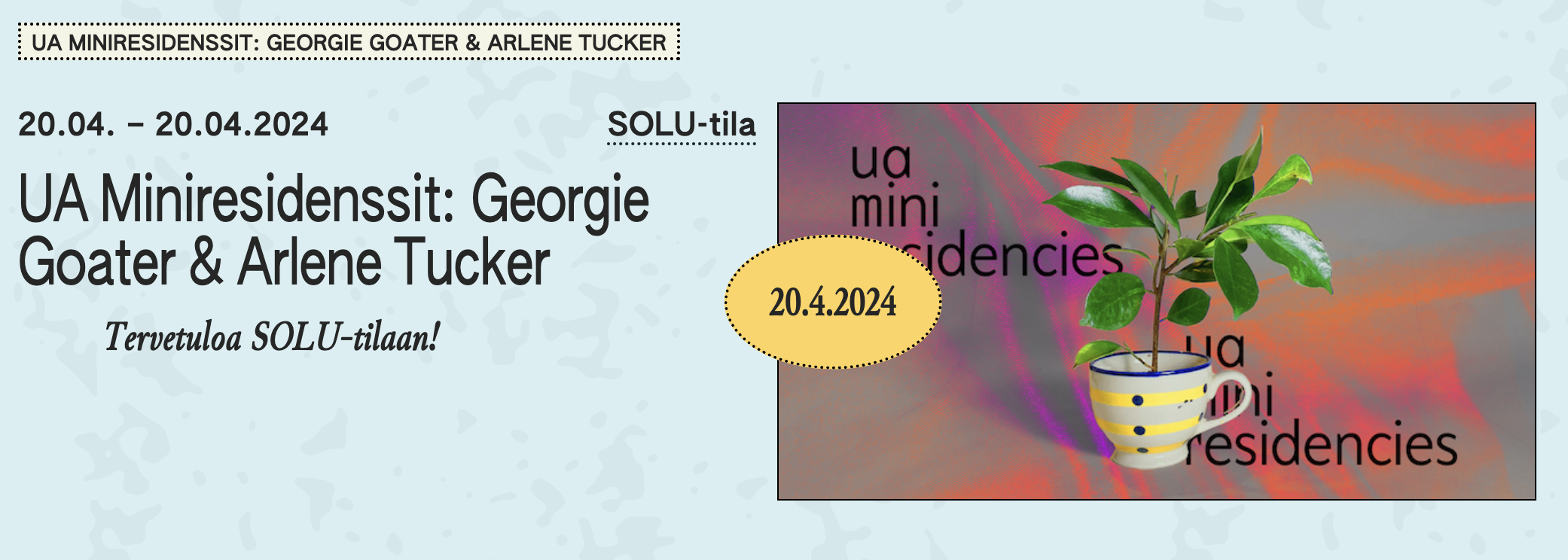



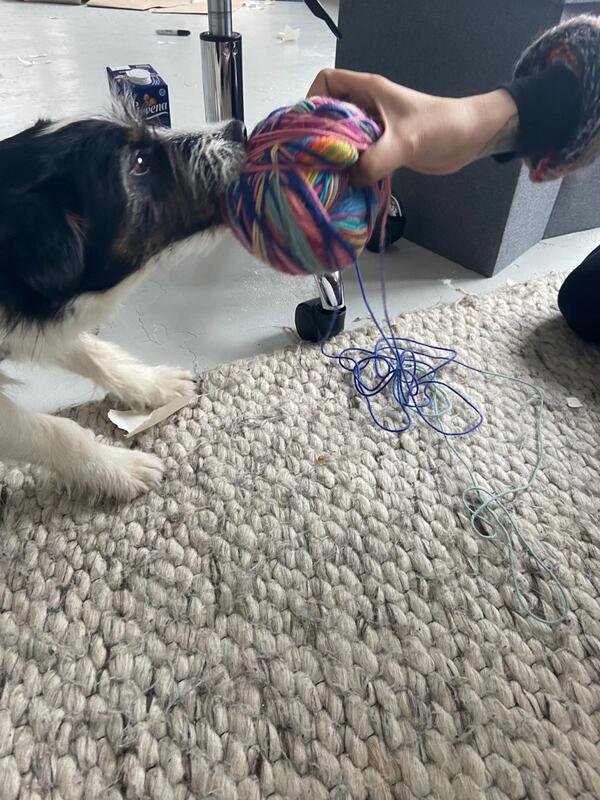

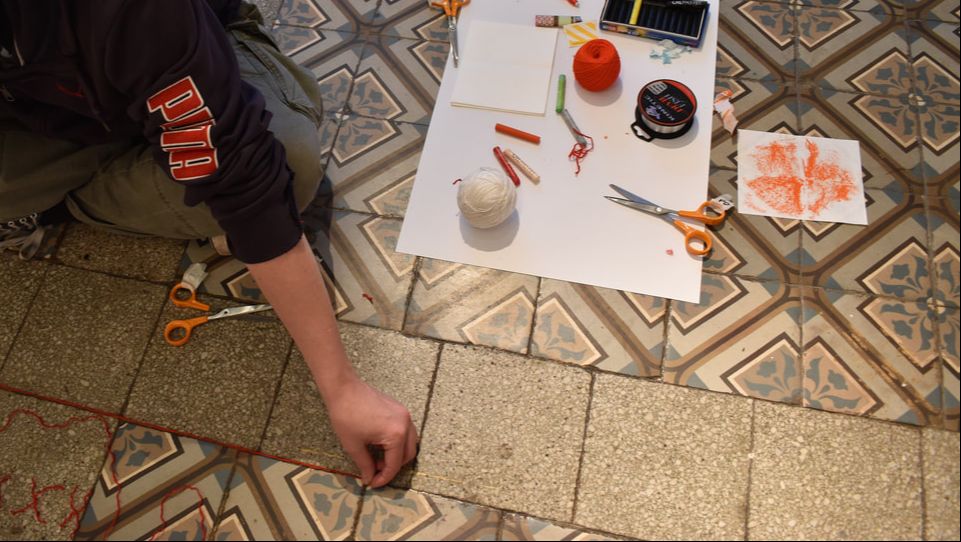
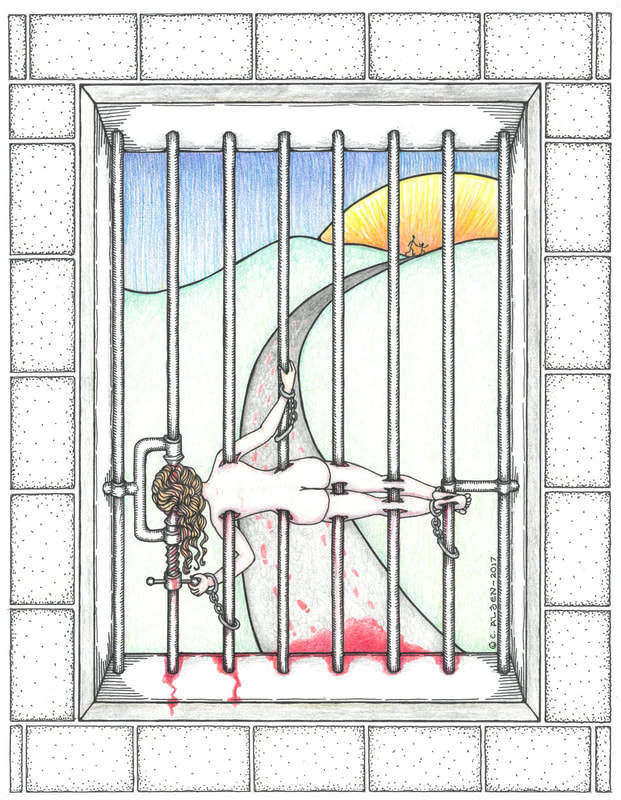




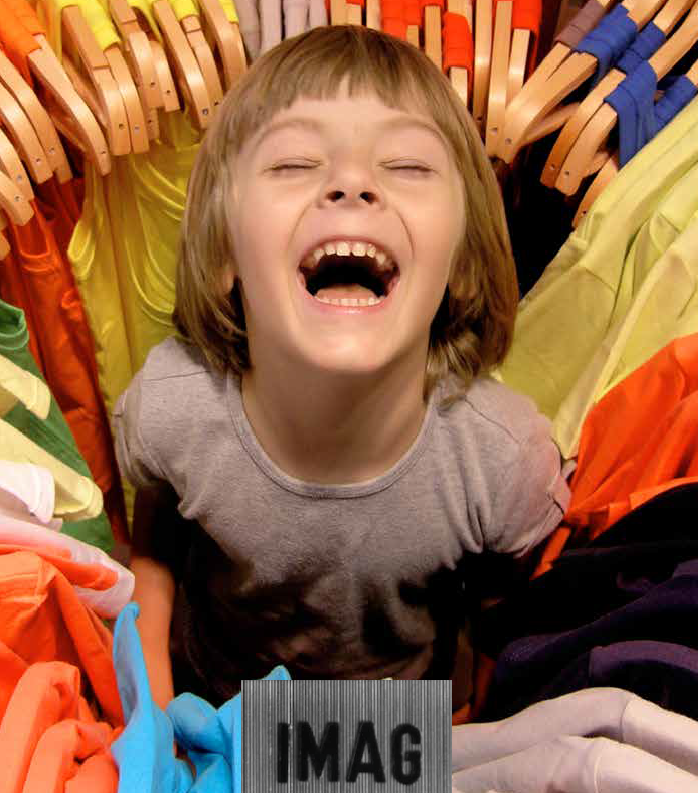
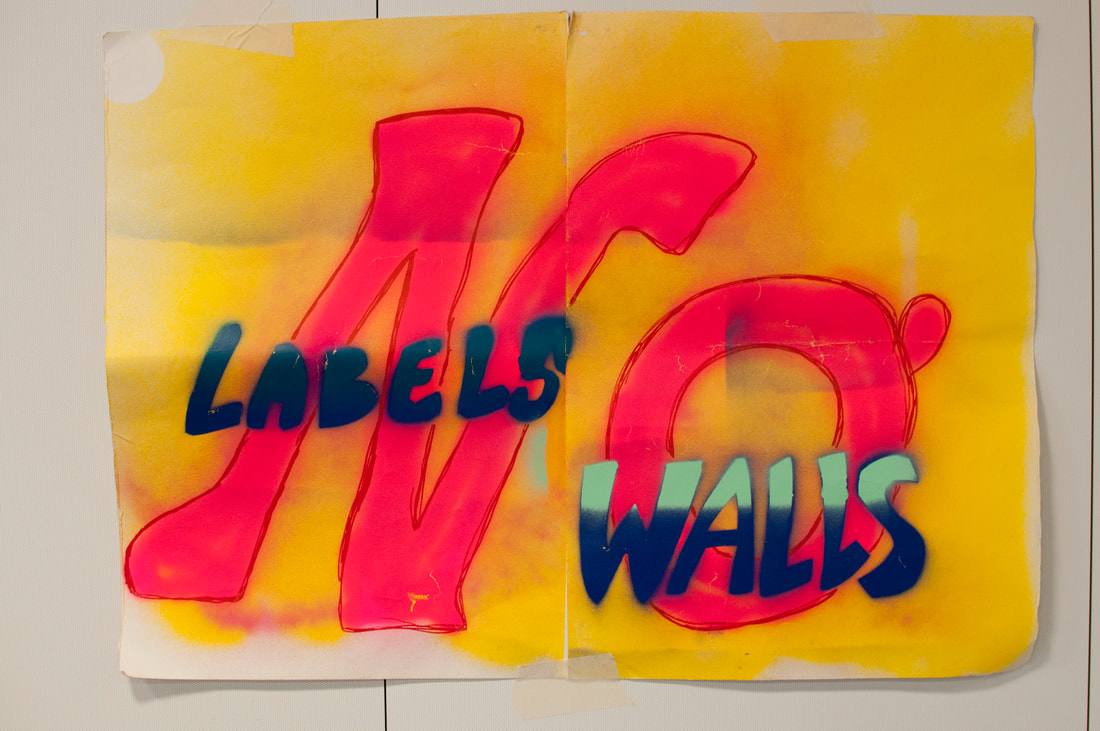
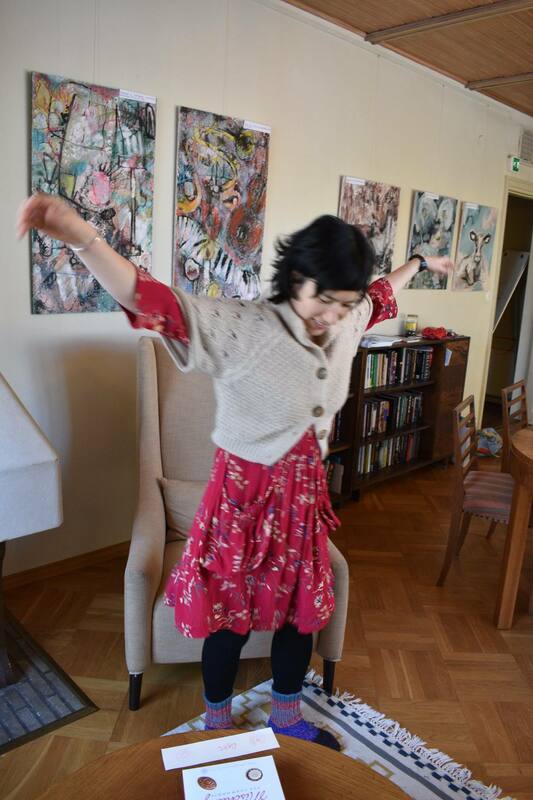

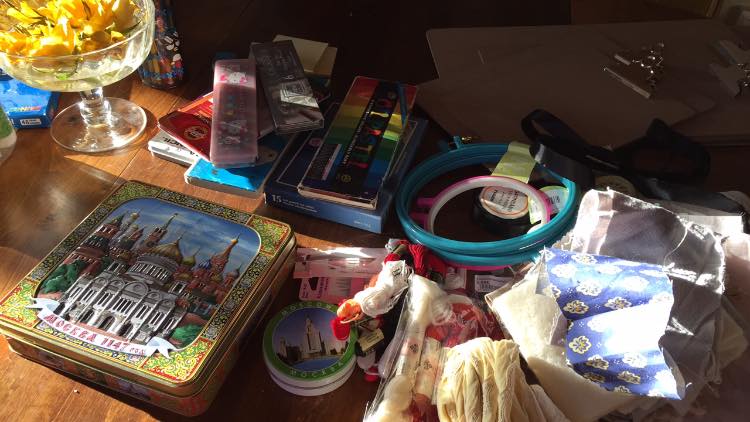
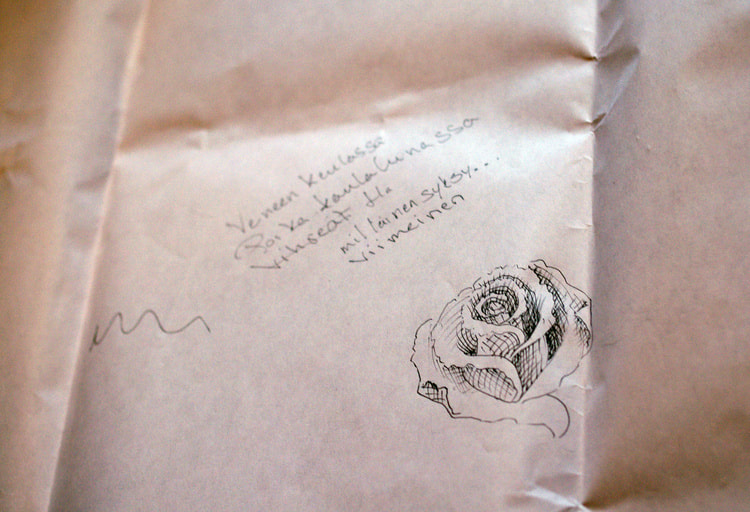
 RSS Feed
RSS Feed
